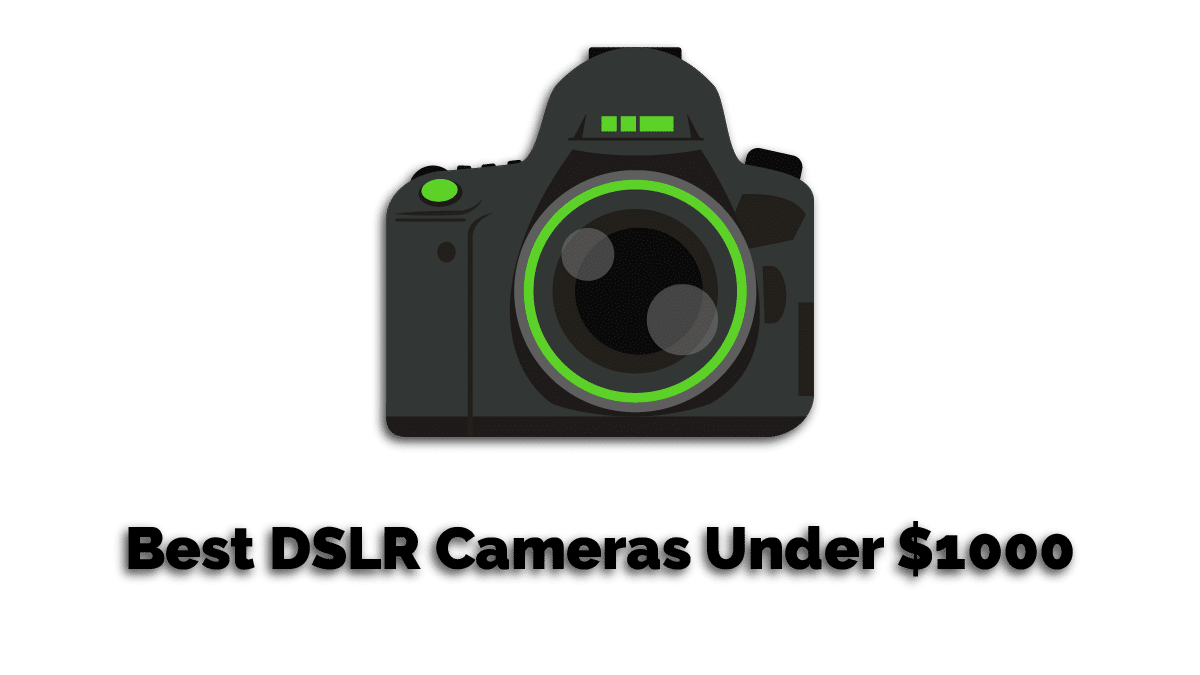Last updated on March 17th, 2022
When people hear about DSLR cameras, many would think they’re expensive. However, with several manufacturers producing DSLR cameras, many models price below $1000.
Although some manufacturers shifted to focus on mirrorless cameras a few years back, there are several reasons to choose a DSLR camera over a mirrorless camera:
- Battery life is considerably longer in a DSLR than in a mirrorless camera.
- DSLR cameras are easier to grip and hold in rugged terrain. Have you ever dropped a smartphone or remote?
- More lenses are readily available at lower costs, especially from third-party manufacturers like Sigma and Tamron.
Editor’s Top Picks
Best Canon DSLR Camera under $1000: Canon Rebel EOS Rebel T8i
Best Nikon DSLR Camera under $1000: Nikon D7500
You might also like:
Pin for Later
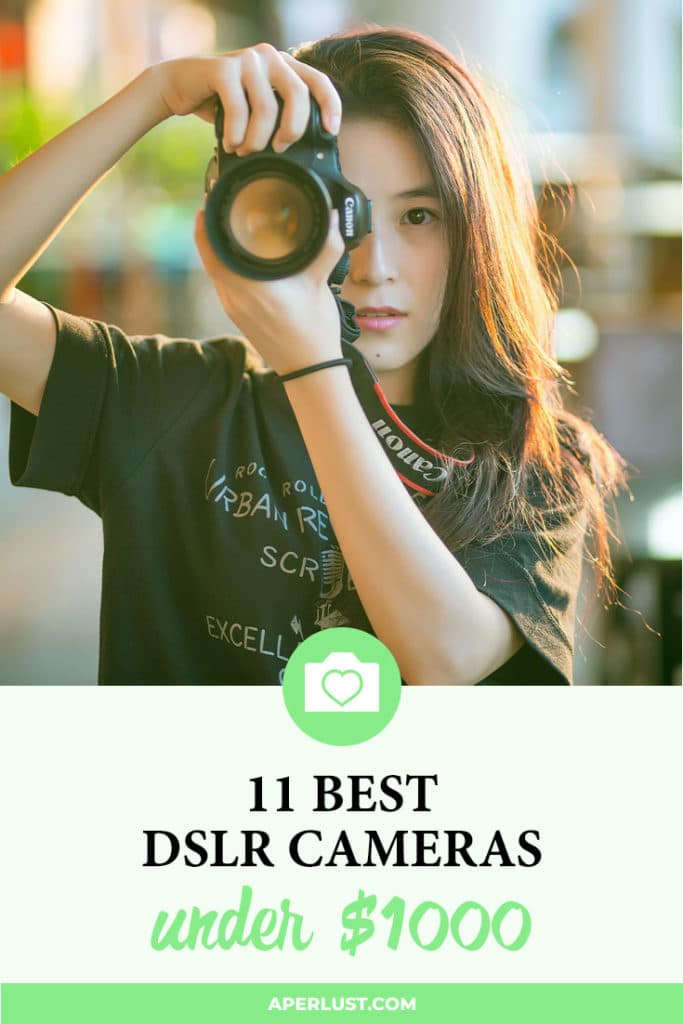
Best DSLR Cameras Under $1000
1. Canon EOS Rebel T8i
Canon’s EOS Rebel T8i, also known as the EOS 850D, is a 24-megapixel DSLR camera that fits Canon’s EF and EF-S mount lenses. Like most DSLR cameras, the Rebel T8i comes with an optical viewfinder, which you can use when taking photos. It also has a responsive touchscreen interface and a live view experience on par with Canon’s mirrorless camera options.
The camera sensor size that comes with this model is an APS-C, which is standard in entry to mid-level DSLR cameras. The ISO in this specific camera model ranges from 100 to 25,600 and extends to 51,200 in some scenarios. With its 7 fps continuous shooting, you can be sure to capture every single moment. In terms of autofocus, it has a 45-point, all cross-type phase-detect, making it easy to track still and moving subjects.
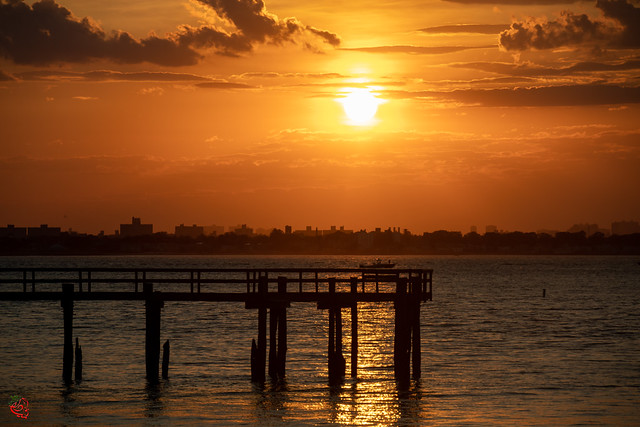
Physically, the Canon EOS T8i looks similar to its predecessor, the T7i. However, a few key differences are in the rear panel, including a new rear control dial and an AF-On button. Bluetooth and WiFi connectivity remain, but NFC is no longer available in the T8i.
Looking into the sensor, the sensitivity range and sensor resolution are the same. But the faster image processer in the T8i allows for a significant increase in burst performance. It has shutter speeds from 1/4000 to 30 seconds.
The viewfinder in this model is a bit dim compared with the electronic viewfinders of mirrorless camera rivals and even some rival DSLRs. The rear LCD is easy to see and crisp even under direct sunlight. Its full-articulated mechanism allows framing from several angles, including selfies.
Pros
- The optical viewfinder is crisp and does not lag
- Outstanding ergonomics and solid external build
- Compatible with EF and EF-S Canon lenses, as well as third-party lenses
- Impressive battery life
- Fully articulating display
Cons
- Noise and loss of saturation become noticeable by ISO 3200
- In-body image stabilization is not available
- AF points mostly are in the center of the frame
2. Canon EOS 90D
The Canon EOS 90D replaces the 80D, which fits between the EOS 77D and EOS 7D Mark II. What’s new to the EOS 90D is the higher-resolution 32.5MP image sensor, a live viewfinder with eye detect, and 4K video capture.
The Canon EOS 90D is the DSLR equivalent of the mirrorless Canon EOS M6 Mark II. Since the specifications in these two cameras are similar, it seems like Canon has given its buyers the option to choose between a DSLR camera or a mirrorless camera.
It has an ISO that ranges between 100 to 25600 and expands up to a maximum of 51200. The minimum shutter speed is 30sec, and the maximum shutter speed is 1/8000 for mechanical and 1/16000sec for electronic.

Canon has added face detection when shooting through the viewfinder. In most previous models, face detection is only available when shooting through the rear LCD screen. However, with only 45 AF points to work with, it’s not as precise as face detection in live view.
The 90D has a 3-inch, 1.04M LCD screen that fully articulates and touch-enabled. You can navigate all the menus, including the Q menu, by touch. There are several available ports, including the mic input, remote cable, USB 2.0, HDMI, and headphone input. The EOS 90D estimates at 1300 shots when shooting through the viewfinder or 450 shots when shooting in live view.
Pros
- RAW image quality is excellent in detail capture and dynamic range
- JPEG colors are pleasing to the eyes
- Live view autofocus is good
- The optical finder is superb
- The touch LCD flips 180 degrees and is very responsive
- Solid camera build and excellent ergonomics
Cons
- Limited viewfinder autofocus coverage
- No USB charging
- Menu layout can be confusing
- No in-body stabilization, which limits handheld video shooting
3. Nikon D7500 DSLR Camera
The Nikon D7500 is a mid-range DSLR and gets many features from Nikon’s flagship D500. It comes with a 20.9MP APS-C CMOS sensor, which is excellent in most shooting conditions. It also has a 51-point phase-detect AF, making it easy to track and shoot moving and still subjects. The D7500 has an 8 fps burst mode. Looking at its physical appearance, not much has changed in the D7500’s design compared to its predecessors.
Although the D7500’s sensor is 3 megapixels less than the D7200, it does not mean it’s worse. The D7500 borrows its sensor from the D500. It is built for fast readout speeds and excellent image quality. Looking at the viewfinder, the D7500 has an 18.5mm eyepoint and a magnification of 0.94x. There is also a sensor that turns the rear LCD off when the camera is to your eye. The updated EN-EL15a battery offers up to 950 shots per charge.

The memory card slot is at the side of the camera, making it accessible even when mounted on a tripod. Its single memory card slot supports UHS-I memory cards, but not UHS-II. If you are not a fan of the optical viewfinder, you can use the tilting touchscreen-enabled LCD screen. Touch operation lets you navigate the menus, playback content, and during live view shooting.
Pros
- Excellent RAW and JPEG image quality
- Autofocus performance is reliable even at 8 fps
- 4K video quality is acceptable
- The touchscreen is fast and very responsive
- Well-designed ergonomics and handling
Cons
- One memory card slot only
- No vertical accessory grip
4. Canon EOS Rebel SL3 DSLR
The Canon EOS Rebel SL3 is the most recent model in Canon’s lineup of ultra-compact DSLR cameras. It comes with a 24MP APS-C sensor with easy-to-use Dual Pixel autofocus, an optical viewfinder with secondary 9-points autofocus system, 4K video capability, a fully articulating rear LCD touchscreen, WiFi with Bluetooth for image transfer, and superb battery life.
The Canon EOS Rebel SL3 shares most of its features with Canon’s lineup of mirrorless cameras. The question here is, why would you choose the SL3 over a Canon mirrorless camera? It comes down to a matter of personal preference. For example, the Rebel SL3 has a viewfinder, while the EOS M50 does not have one. In simpler terms, an electronic viewfinder lets you easily preview your exposure settings, whereas an optical viewfinder allows you to see it more naturally.

The out-of-camera JPEGs you get from an EOS Rebel SL3 is not the greatest in terms of noise, but for social occasions, where overall exposure, color, and white balance are more important, the SL3 is a strong candidate.
Pros
- Image quality is okay, and JPEGs have nice color
- Useful ‘guide mode’ for beginners
- Good build quality
- Good controls and a comfortable grip
- Excellent battery life when using the viewfinder for shooting
- Wireless connectivity is excellent
Cons
- No USB charging
- Video quality is not great
- Some users may find the viewfinder small
5. Canon EOS 80D DSLR
The Canon EOS 80D is the follow-up to the EOS 70D. It comes with a new 24-megapixel APS-C CMOS sensor that has Canon’s Dual Pixel on-sensor phase-detection AF system. Furthermore, it has a 45-point hybrid cross-type AF system. If you’re someone that likes to shoot in wet conditions, the 80D is a great choice to pick.
Its body is sealed against moisture and dust, made possible with its polycarbonate body and magnesium alloy frame. While the 80D does not support 4K video shooting, it does offer 1080/60p capture and continuous AF during recording. A new headphone socket is also available to complement the microphone port.

Looking closer at the 80D’s image sensor, it marks the giant leap forward in Canon’s sensor development, offering a significantly better dynamic range than previous models. Dual Pixel AF allows for continuous autofocus during video capture and still capture.
At the top of the camera, the left side is where you can find the mode dial, which has a locking apparatus to avoid accidental bumps. On the right are the LCD, drive button, ISO button, metering button, and AF button. In between the shutter release and the control dial is the AF area selection button. Tapping this button allows users to jump between the four autofocus area modes quickly.
Pros
- Easy to use
- The Dual Pixel autofocus allows for accurate, fast AF in live view
- All 45 autofocus points are cross-type
- Articulating touchscreen LCD
- Auto ISO implementation is good
- 7 fps burst speed
- Battery life is good
Cons
- Dynamic range is behind the competition
- No 4K video
- Subject tracking through the viewfinder is not accurate
6. Pentax KP DSLR Camera
The Pentax KP DSLR Camera comes with a 24-megapixel APS-C sensor with controls and aesthetics that come largely from the full-frame Pentax K-1. It comes with standard Pentax features, such as full weather-sealing, in-body five-axis shake reduction, pixel shift resolution, and an interchangeable front grip system.
The ISO in this DSLR ranges from 100 to 819200. It has a 27-point AF sensor with 25 central cross-type points. Shooting moving subjects is a breeze thanks to the 7 fps continuous shooting mode.

When looking at the build quality of the Pentax KP, it’s superior. The KP’s weight makes it feel like it is made of pure metal, even if some plastic components are used in its construction. The interchangeable grips are one of the prominent features of the KP. The grips are available in a small, medium, and large grip that all fasten securely to the front of the Pentax KP.
Battery life is probably the most significant compromise made in exchange for camera size. Due to its relatively small size, the Pentax KP takes fewer shots per single full battery charge.
Pros
- High ISO performance is excellent in both JPEG and RAW
- The interchangeable grips allow users to find the perfect fit while keeping comfort and style in mind
- Small overall form factor
- Excellent build quality and weather-sealing
Cons
- Autofocus system is sub-par
- Poor battery life
- Heavy for its size
7. Sony Alpha a99 II
The announcement of Sony’s a99 II proved that the A-mount is not dead at that time. The A99 II was an improved version of the A99 to put it in the same level as DSLRs like the Canon 5D IV and Nikon D810. It comes with a 42-megapixel BSI CMOS imaging sensor, best paired with the 399 on-sensor PDAF points and 79 points for the dedicated PDAF sensor.
Thanks to the dual SD card slot, this camera lets you store thousands of photos and hundreds of minutes of video. Shooting moving subjects is a breeze with the 12 fps continuous shooting in RAW with continuous-AF.

Moving on to its video capabilities, the Sony A99 II can shoot 4K Ultra HD 100 Mbps recording. The 5-axis in-body image stabilization assists in reducing blur while shooting. The built-in WiFi with NFC helps in the easy transferring of photos and videos to your mobile device. The ISO in this camera ranges from 100 to 25600 and is expandable from 500 to 102400.
The weather-sealed body in the A99 II features a dedicated PDAF sensor separate from the imaging sensor. Unlike a DSLR, the mirror in a DSLT camera does not flip out of the way. Instead, it is semi-transparent. Only part of the light it receives is sent to the dedicated AF sensor, while the rest of the light passes through the imaging chip.
Pros
- In-body stabilization allows slower shutter speeds with all compatible A-mount lenses
- Impressive 4K footage, with 4:2:2 output available to an external recorder
- Accurate Autofocus-Single performance
- Excellent JPEG NR, detail retention, and sharpening
- Autofocus-Continuous at 12 fps is outstanding
Cons
- Limited use of autofocus in video mode
- Slight lag to some of the controls
- The memory card slot does not support UHS-II
8. Nikon D500 DSLR Camera
The Nikon D500 is a 21-megapixel APS-C DSLR camera that shoots up to 10 fps. It features an autofocus system similar to the one in the Nikon D5. Many improvements in the D500 center around high-speed shooting and sports photography. Aside from the significant upgrades to the autofocus system and shooting rate, there are major upgrades to video shooting capabilities, viewfinder, and connectivity options.
Looking into the autofocus system, the D500 has a 153-point AF module with 99 cross-type points. The 10 fps shooting allows for up to 200 shots.

Without a doubt, much of the capabilities of the D500 are built around the ability to quickly autofocus and shoot. The 153-point autofocus offers near full-width coverage. Linking it with the 180,000-pixel RGB metering sensor allows for even better autofocus tracking.
The ISO in the Nikon D500 ranges between 100 to 51200. It is expandable from 50 to 1640000, giving flexibility to the users of this camera body. Like all F mount Nikon DSLRs, the D500 is compatible with Nikon’s F-mount lineup of lenses. And it has an astonishingly maximum shutter speed of 1/8000 seconds for the price range.
Pros
- Superior image quality in both RAW and JPEG
- Excellent autofocus performance even at 10 fps
- Excellent ergonomics and handling
- 4K video quality is generally good
- The touchscreen LCD panel is responsive and user-friendly
- The joystick makes it easier to select an AF point
Cons
- Autofocus in video mode is prone to re-focus and wobble
- The default JPEG noise reduction and sharpening are a little high
- USB charging is not available
9. Pentax K-70
The Pentax K-70 is a mid-level DSLR that features a 24MP APS-C CMOS sensor with on-sensor PDAF. It has a shake reduction in-body image stabilization system, which is available in most of Pentax’s DSLR range of cameras. The image sensor in this camera model enables the K-70 to shoot 14-bit RAW images at 6 fps, which works well with its 11-point autofocus system. The 9 points located at the center of the autofocus system are cross-type.
The ISO in the K-70 ranges from 100 to 102400. It has a minimum shutter speed of 30 and a maximum shutter speed of 1/6000 sec. The implementation of auto ISO in the K-70 is quite good, allowing users to specify the maximum ISO and a rate that chooses a shutter speed threshold for the selected focal length.
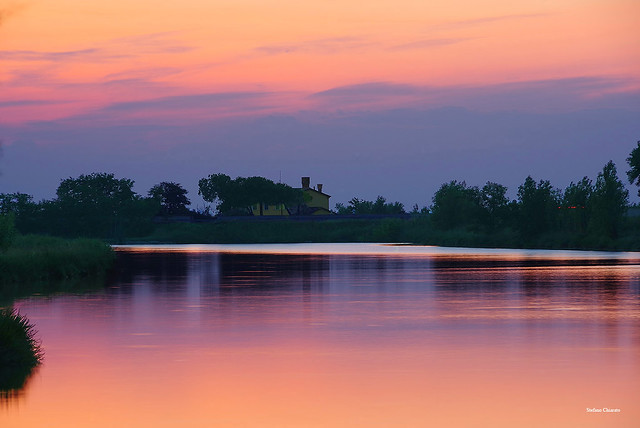
One of the best improvements in the K-70 over its predecessors is the increase in depth and girth, making it even more comfortable to carry around, even with the camera’s noticeable extra weight. With that said, the increase in the size raises questions why they did not fit a larger battery. On a single full charge, the battery rates at around 410 shots, which is the lowest in its class.
Pros
- Exceptional still image quality in both JPEG and RAW
- Robust build and weather-sealed
- Shake Reduction system greatly assists handheld sharpness
- In-camera RAW conversion interface with extensive adjustments
- Interface is customizable
Cons
- A limited number of AF points and area
- Continuous autofocus for video is disappointing
- Short battery life
10. Nikon D5600
The Nikon D5600 replaces the long-standing D5500. The features between these two are identical, such as the same 24.2MP APS-C CMOS sensor and the EXPEED 4 image processor, with an ISO ranging from 100 to 25600. It has a 39-point autofocus system where 9 are cross-type. The shutter speed in this particular model has a minimum of 30 and a maximum of 1/4000 sec.
Looking into the optical viewfinder, the D5600 provides coverage for 95% of the frame, which is pretty standard for an entry-level DSLR camera. The rear LCD in the D5600 is a 3.2-inch variable-angle touchscreen with a 1,037,000-dot resolution.

Video capabilities in the D5600 are not impressive, as Nikon decided to stick with 1080p capture with up to 60 fps. You do have an option of using a dedicated microphone, which you can attach to the 2.5mm port on the camera side.
In terms of connectivity, Nikon added its SnapBridge connectivity, which allows for constant connection between the camera and a smartphone device. This feature uses a low-energy Bluetooth connection wherein batches of images are transferred automatically from the D5600 to your smartphone devices. You also have the option to select individual JPEG images. You can also use SnapBridge to transfer videos and remote capture images over WiFi instead of Bluetooth.
Pros
- Fantastic image quality
- Variable-angle LCD makes it versatile
- Good improvements over its predecessor
Cons
- SnapBridge needs improvement
- Autofocus points are limited
11. Sony SLT a77 II
The Sony a77 II is an overhaul of the original a77 from 2011. The a77 II features an all-new autofocus sensor with more focus points and an updated 24-megapixel sensor.
The body is made of magnesium alloy, making it weather-resistant and dust-resistant. The ISO in this camera ranges from 100 to 51200 and is expandable from 50 to 51200. It has a maximum shutter speed of 1/8000 sec.
The magnesium alloy body adds weight, but not to the point of being extremely heavy. The right-hand grip feels enough and gives easy access to the essential buttons on the camera. The a77 II has traditional front and rear dials. It uses a joystick to navigate through the camera settings.
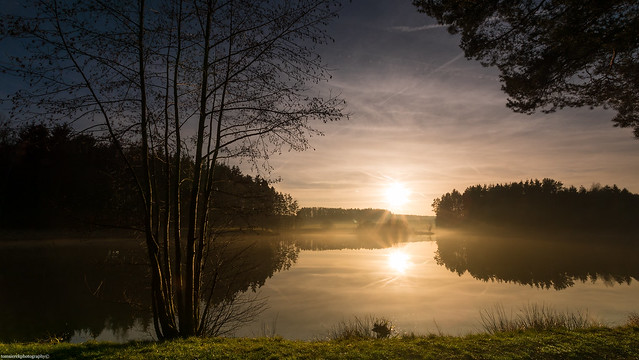
The 3-inch articulated screen in the a77 II uses a swivel-and-tilt joint, allowing for a wide range of positions, including setting the screen facing forward. The LCD uses a WhiteMagic display, in addition to the standard, blue, green, and red. WhiteMagic display adds an extra pixel for white, allowing better visibility outdoors and better battery life. The electronic viewfinder is one of the best you can find as it uses an XGA resolution and OLED technology.
Similar to most Sony cameras, the a77 II is outstanding in video recording. The in-body image stabilization allows users to shoot handheld, without much shake. The semi-translucent mirror makes it possible for full-time continuous autofocus. However, shooting video in AF-C will not allow you to control aperture and shutter speed. You also cannot shoot video in AF-S. If you have the camera in AF-S and switch into video mode, it automatically switches to AF-C mode.
Pros
- 12 fps burst mode with AF-C
- AF-C is effective in still and video modes
- Face detection works great
- Excellent build quality and ergonomics
- Articulating LCD allows for flexibility
Cons
- High ISO results in too much noise in the images
- Only 15 cross-type AF points, which is limited to the central portion of the frame
- No headphone jack
Conclusion
There are several DSLR cameras in the market below $1000 nowadays. It’s up to your needs as a photographer to choose which one provides the most value to you. Every manufacturer has a camera model in direct competition with another manufacturer, making it more difficult for users to choose which one to purchase.
If specs and prices are similar, it may be good to look into aftersales service for that brand in your area. For example, if the choices are between a Nikon and a Canon, assuming all specs and prices are equal, you may want to look into which brand has the nearest service center in your area.
The number of supported lenses is also something that you should consider. Generally, Canon and Nikon cameras have the most number of supported lenses in the list above. However, Sony has recently been catching up. Also, keep in mind that camera lenses are far more valuable investments than the body if you stick with one brand.
At the end of the day, there is no single best camera under $1,000. It’s a matter of choosing which one is best for you at a given price.

